Shooting VR films despite motion sickness: An interview with two VR-180 video experts
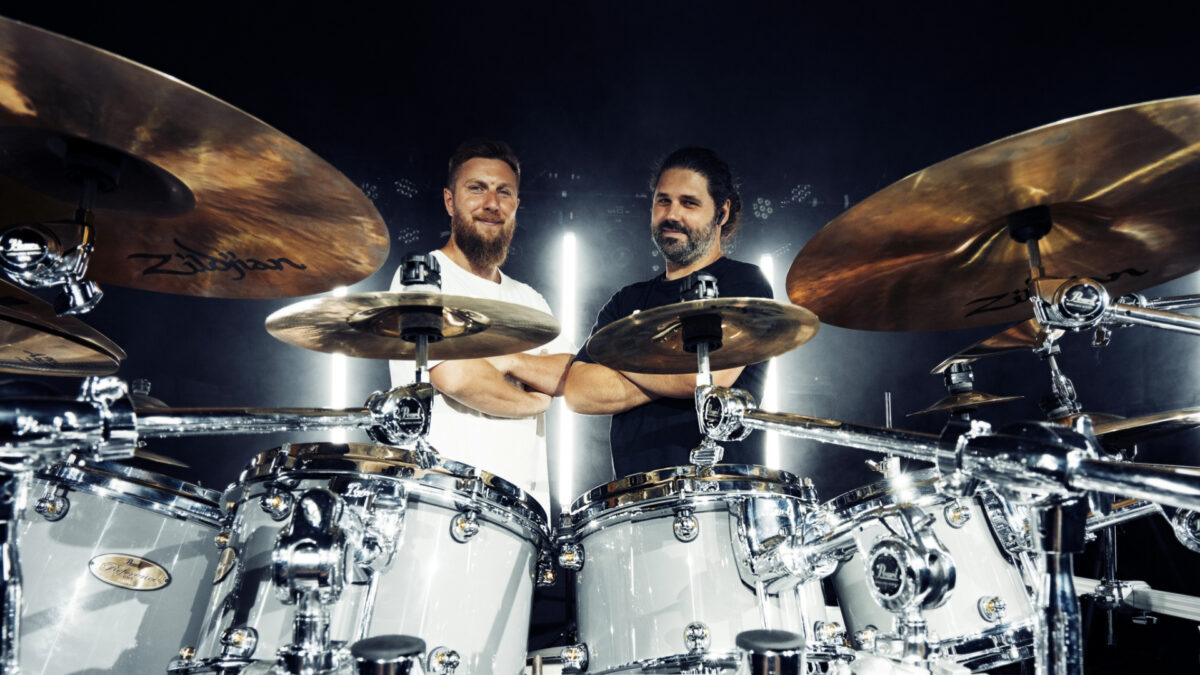
MIXED talks to VR180 video experts Björn Sondermann and Jérôme Lozano about their experiences with immersive media.
By Daniel Pohl
The duo Sondermann and Lozano have already produced some very impressive VR content that surpasses much of what has been released professionally in terms of quality and cinematography.
How did it all come about, what is still missing, and where is the journey going? We talk about this and much more in this interview.
Content
Who are Sondermann & Lozano?
Hello Björn and Jerome! I'm glad you found the time to talk to me today about your exciting VR180 video projects. How did you get into VR180 filmmaking?
Björn Sondermann: For me, it all started with the original Oculus developer kit DK1. Despite suffering from slight motion sickness, I was very fascinated by the technology. Over the following years, I watched a lot of 360° and 3D videos in VR. I was also very impressed by the Joshua Bell VR Experience on Playstation VR. In 2020, I experimented with various VR180 3D cameras such as QooCam and Insta360 EVO myself and started the YouTube channel "We are VR Music" as a result.
I find it particularly exciting to supplement the real filmed worlds with virtual content. For example, integrating 3D scenes or texts into VR180 3D videos using tools such as Blender or the Unreal Engine. About a year and a half ago, I got to know Jérôme through his impressive VR180 music video SUIR - Vampires. It included camera movements that didn't trigger any motion sickness for me thanks to the timid movements. Since then, we've been doing a lot of VR video work together.
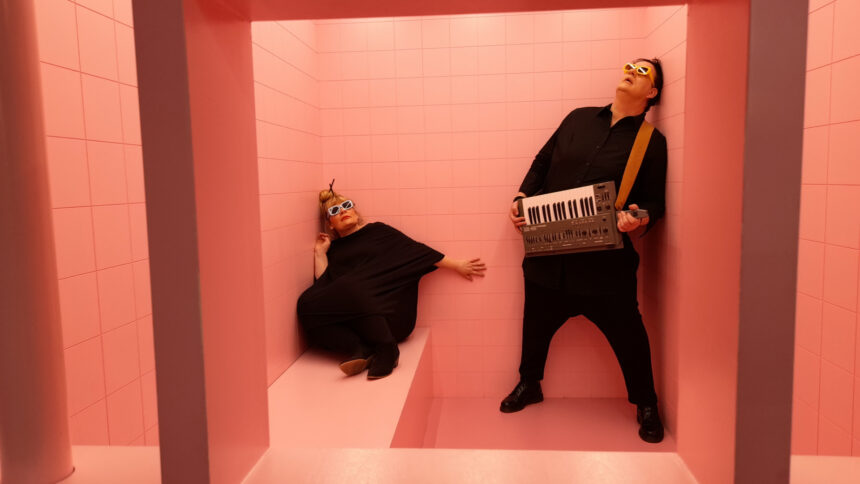
An excerpt from the semi-spherical 3D video "Mängelexemplar". | Image: Lozano
Jérôme Lozano: My background is in post-production and video editing, including commercials. I've also directed small music videos. I got my start in VR video with the Insta360 X2 camera on a 360° 2D video for the French band "Blind Delon". I learned more about it through YouTube VR, and then I got into 180° 3D, which was even more interesting to me. We then used the Insta360 EVO to create the music video "Mängelexemplar", which we presented at the Amsterdam International Film Festival and won the first prize.
After that I bought the Canon R5 C + 5.2mm Dual Fisheye setup. It took about two months to find the right workflow for shooting and editing with it. Together with Björn, we then shot more VR experiences, for example focusing on POV (point of view) shots to show the experience through the eyes of the musician. Thanks to 8K at 60 fps, we can already offer a very realistic presentation.
What are your wishes for future VR cameras?
Björn Sondermann: It is very important to us that the workflow is as efficient as possible. So being able to capture directly from the camera in a rectangular format (instead of using a fisheye and then converting) would be a huge simplification for us to be able to edit faster. Especially with RAW processing, we have a very tedious process when editing VR videos due to the many nodes in the editor.
Jérôme Lozano: The current cameras with 8K video and 60 fps are relatively affordable for a professional recording budget. However, it would be very desirable to see new, simpler VR180 cameras released to the consumer market to boost the overall VR180 market. This would lead to more content and better tools. I also find it very difficult to shoot RAW video because you don't know exactly what you're going to end up with in VR.
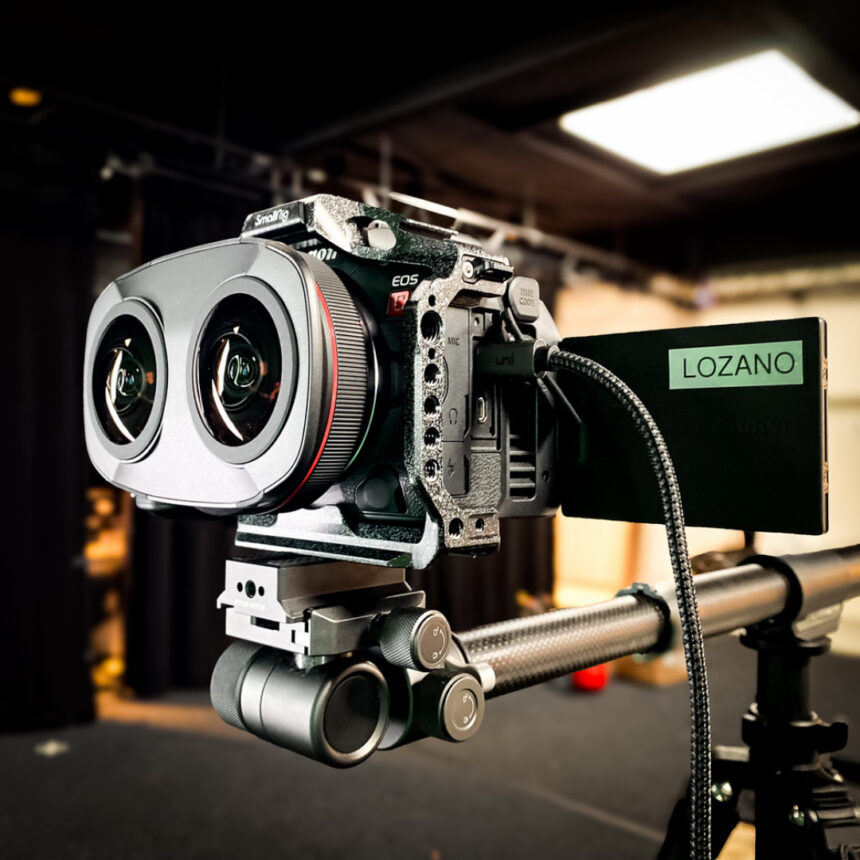
The Canon R5 C with the 5.2mm Dual Fisheye lens for creating VR180 3D videos. | Image: Sonermann, Lozano
Have you already experimented with 90 fps?
Björn Sondermann: Yes, by using AI to upsample the frame rate with tools like Topaz Video AI. This allows you to reduce motion blur during movement and create an even higher level of realism overall. Most viewers probably won't miss 90 fps right now because they're just not used to it. But if you are used to it, you may not want to go back to lower frame rates.
What specs do you see as the minimum for VR180 video?
Björn Sondermann: For VR180 3D video, 6K and 50/60 fps are just about okay at the entry level. We recently tested this with the Calf Kickstarter camera. The workflow is much simpler there because the footage is stored directly in equirectangular format. But things really start to get exciting at 8K resolution and above. Some newer setups consisting of a camera body and a VR lens offer 4K VR180 3D video. At this low resolution, however, there is a risk of alienating viewers, as was the case with the first VR videos on the Samsung Gear VR. Back then, there were only low-quality videos, which turned off many users. In the headset space, of course, it would be desirable to have even wider distribution. The Meta Quest 3 already does a lot of things right, with good quality at a good price.
Jérôme Lozano: The current quality we are getting with 8K is already very good. But what is largely missing is the distribution of the content. What do viewers want to see? Is it music videos? Travel videos? With many VR video platforms, such as YouTube VR, playing the videos is a cumbersome solution. It takes multiple clicks to adjust the quality to the level that the video experience needs to be effective.
What have been the most important changes in the VR video market in recent years?
Björn Sondermann: For us, it was Canon's entry into the professional VR180 segment. This is a very bold move that we are very excited about. The emergence of standalone VR devices such as Meta Quest has also changed a lot, as you can now comfortably watch VR videos without cables.
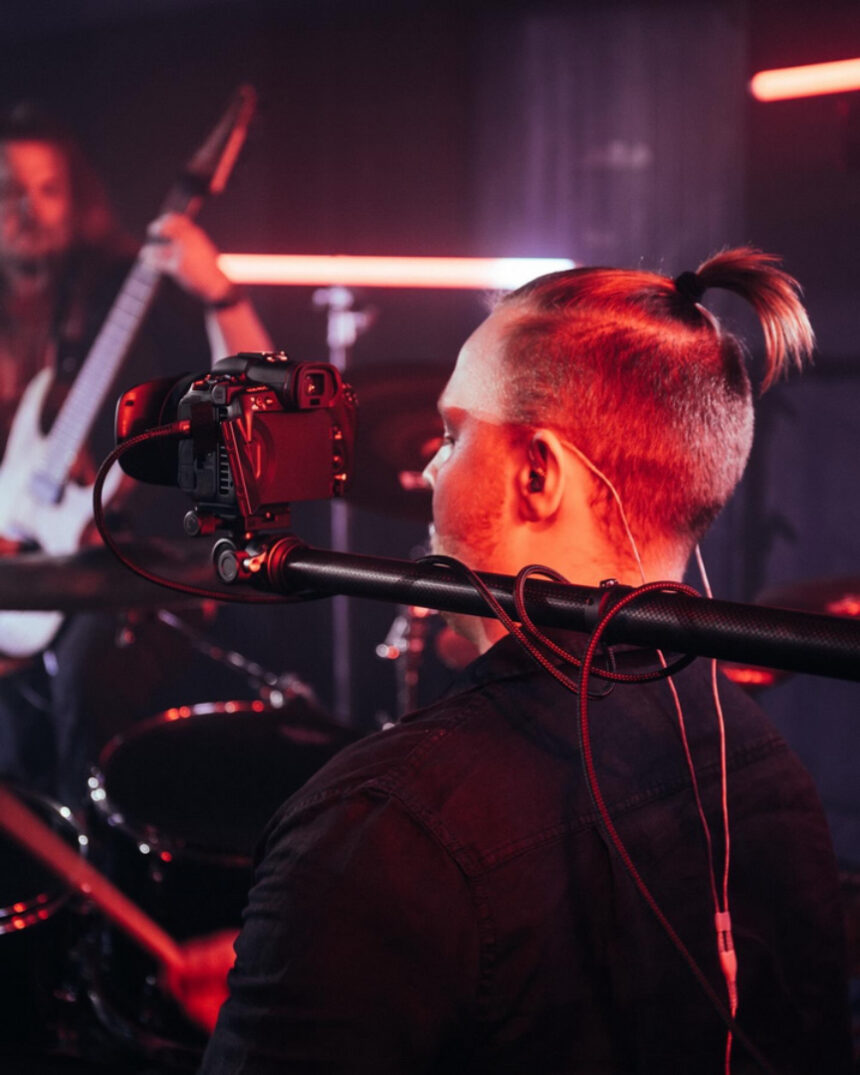
This is what recording VR music videos looks like from the artist's perspective. | Image: Catalina Abu
Motion sickness in VR: What are your experiences, and what do you do about it?
Björn Sondermann: I experienced severe motion sickness with Playstation VR while playing a game where you fly over Paris with an eagle in VR. The eagle flew in the direction you were facing. At the time, I tried to do this for a few minutes every day, but there was no improvement. So when I got into VR video, I didn't do any movement in videos at all. We now know that if we are going to do movement in VR videos, we should do it in shorter segments of the video so that the discomfort goes away faster.
Jérôme Lozano: I am very susceptible to motion sickness myself. In this case, however, the benefit is that I can quickly assess how it will affect sensitive users in the content we produce. When we make movements in videos, we use them very deliberately. They are executed very slowly. It is also very important that there is no lateral movement. The movement itself has to be done with a gimbal to get stable results. In this respect, VR180 3D video is quite restrictive compared to classic videography: no fast movements, not even flying across the stage and showing the musicians or anything like that. Sometimes we experiment with different ideas in VR, but that can go wrong quickly and lead to motion sickness.
What is your minimum distance between the camera and the filmed objects?
Jérôme Lozano: 50 cm is the minimum for us, but we try to be closer to 1 meter. We also experimented with close-ups on the hands of the musicians, but unfortunately, it didn't work so well.
What should be considered for the individual cuts in a VR180 3D video?
Björn Sondermann: We try to avoid shifting the focus points too much between scenes. This is especially important for stereoscopy. We also try to keep the interesting objects in the center. Ideally, the entire shot should be in focus throughout. We currently have a project with Pearl Drums. It focuses on the high-end performance of musician George Kollias playing a huge drum set. There are numerous changes of perspective, first from the front and then directly to the Demon XR foot pedal of the drum set at a distance of 40 cm. The whole thing is breathtaking because of the tremendous speed George achieves. This also allows for much faster cuts.
Jérôme Lozano: 15-second long shots work very well because people have time to look around. But a 5 or 6 second change can also be very exciting. But you have to make sure that the content is very central in the field of view. You have to be prepared for the fact that people won't be able to look around in the short time available. Scenes with only 1 second make no sense with VR180-3D. As someone who does a lot of editing, it's very exciting to work in this new area of VR where there are no set rules. In terms of transitions, we use hard cuts, sometimes fades in and out.
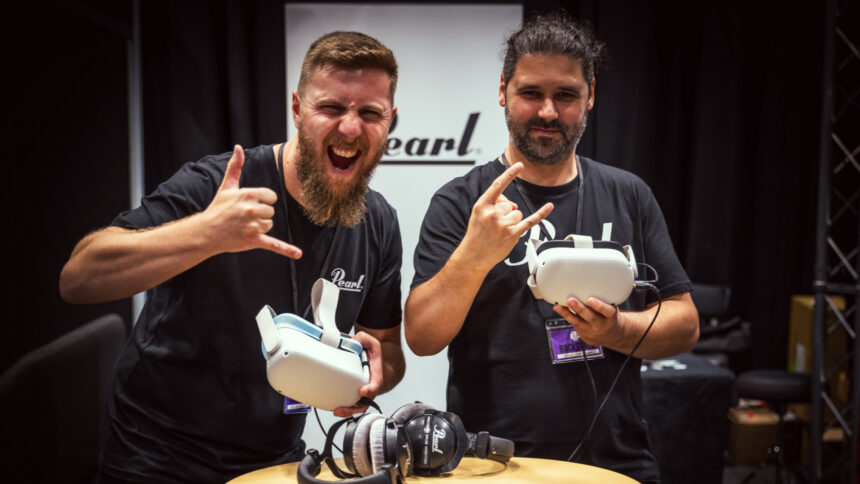
Metal videos in VR180-3D rock on the Meta Quest. Here are Jérôme and Björn at the UK Drum Show. | Picture: Joby Catto
How are you doing with 360-3D?
Björn Sondermann: 360 3D video doesn't work so well for us because it's almost impossible to tell the user where to look. You would need arrows or something to point the user in a certain direction. That doesn't work in practice. You don't stand up in a movie theater and suddenly look to your left. This works better with VR180, where the relevant information is in the center. With drone footage, flights over cities like Barcelona, 360° has added value if you can look in any direction — but not when it comes to storytelling. For 360° 3D, there is currently no good 3D camera that shoots well from all angles.
What are your experiences with 6-DoF video?
Jérôme Lozano: For our "Mängelexemplar" video, we created a 6-DoF version with LifeCastVR. You can check it out at LifeCastVR. I love this experience: you can move around in the video, which allows you to interact with the content in a playful way. Of course, there are still bugs in the artificial 3D motion, it's not perfect yet. It has more of a retro 8-bit aspect to it, which goes well with the decoration of the music video. This gives it a retro-futuristic feel and a pretty unique experience.
Is there another VR video project that you would like to highlight?
Björn Sondermann:We have just started a cooperation with spacevibes (SpaceVibes.org) to present videos on the Apple Vision Pro. Vision Pro is very interesting for us with its specifications for videos and maybe for upcoming 6-DoF experiments. We are still looking for new platforms.
Thank you both for the exciting information and your experiences. I'm already looking forward to your next projects!
This is the best way to view Björn and Jerome’s content
- immerGallery Direct Downloads(Meta Horizon Store, Steam Store) - The videos here are in the original master quality (e.g. 1.5 GB for 3 minutes, 8K @ 60 fps).
- https://deovr.com/channel/we-are-vr-music
- https://creator.oculus.com/community/299871058192135/
- https://lifecastvr.com/mexhhh.html Defective copy
The author, Daniel Pohl, is CEO and founder of immerVR GmbH. There, Daniel deals daily with innovations in the field of immersive media, mostly in the area of VR180 stereo photos and stereo videos. With his app immerGallery (Meta Horizon Store, Steam Store), you can experience highly immersive photo galleries with voice-overs and background music in various VR formats on Meta Quest devices. The app also supports video playback for normal 2D / 3D, 180° and 360°.
Note: Links to online stores in articles can be so-called affiliate links. If you buy through this link, MIXED receives a commission from the provider. For you the price does not change.